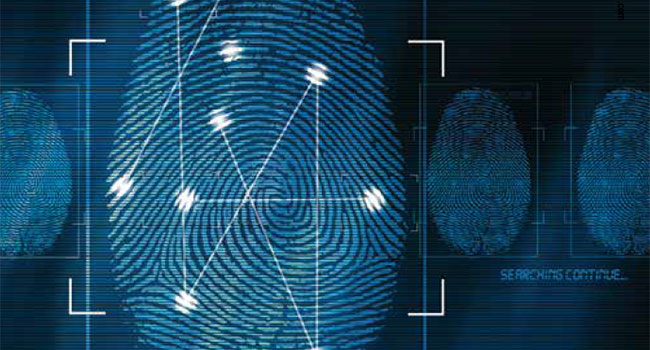
Biometric Ideas
What every integrator should know about the solution
- By Larry Reed
- Nov 01, 2017
To best leverage the advantages of
biometrics, integrators should
follow the tips outlined below to
take advantage of the primary
benefits of biometrics, which
are enhanced security and convenience.
These two benefits are very important, as
security prevents unauthorized access by
someone misusing an authorized ID badge,
and convenience prevents accidental lockout
when a user forgets or loses their ID badge.
While fingerprint readers are becoming
more accurate, there still may be times
when some users’ fingerprints cannot be
recognized. This is most often due to changing
environmental variables and/or lack of
user-training. Here are some useful tips to
improve fingerprint recognition.
Be mindful if a user successfully enrolled
their fingerprint, you should be able to match
that same fingerprint 100 percent of the time.
If however, a previous successfully enrolled
finger cannot be subsequently matched, then
assume something has changed since you
last successfully enrolled that same user’s fingerprint.
There are several possibilities.
- The finger has become dirty. (Washing it
should solve the problem.)
- The finger has become scratched. (Try
enrolling a different finger.)
- The fingerprint sensor has become dirty.
(Try cleaning it with a lint-free cloth.)
- There is insufficient moisture on their finger.
(They should rub their finger against
their forehead or cheek to obtain oil from
their skin and try again. Fingerprints are
just like rubber stamps. If a rubber stamp
has too little ink, then it makes a poor
image. Rubber stamps need ink. Fingerprints
need moisture.)
- The biometric reader has become damaged.
Contact your supplier to have the
reader fixed or replaced.
If you are unable to enroll a user’s fingerprints,
try lowering the threshold setting on
the reader, which desensitizes the fingerprint
scanner, or change from 1:N fingerprintmatching
to 1:1 fingerprint-matching*.
It is possible the condition of the workplace
(i.e. dirty/dusty), weather (very cold/
arid) or employee demographics (ages
younger than 10 years or older than 65
years) may contribute to less than optimal
fingerprint recognition results. If this is the
case, then consider other biometric technologies
that are not obscured by working
conditions, such as face recognition, veinpattern
recognition or iris recognition.
Lastly, it’s possible that based on your
environment, users and/or budget that a traditional
card-based access control system is
best suited for you.
Biometrics is a “credential,” just as metal
keys, access badges or PIN codes. Each credential
has its advantages and disadvantages.
Under certain circumstances, every type of
credential can fail or have difficulty, including
a metal key that wasn’t copied precisely
and can’t open a door lock easily. Likewise,
biometrics requires the cooperation of users.
If they need access, they will learn how
to “cooperate” with the biometric reader.
But, unless the owner/manager ensures their
employees are “cooperating,” employees will
not often cooperate and claim the biometric
reader doesn’t work.
Biometrics does provide the highest level
of security and convenience. But just like a
slightly imperfect metal key, biometrics requires
the cooperation of users to make it
work.
This article originally appeared in the November 2017 issue of Security Today.
About the Author
Larry Reed is CEO of ZKAccess.